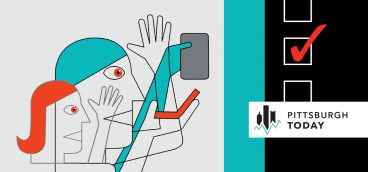Futurists Mull What Changes Lie Ahead

The Futurists tried to warn us.
For decades, researchers and experts in the field of Strategic Foresight, or Futurism, have warned that the United States is dangerously unprepared for a pandemic.
The U.S. Government Accountability Office produced dozens of studies on the topic since the early 2000s. A 2004 forecast report from the National Intelligence Council warned “Some experts believe it is only a matter of time before a new pandemic appears” with dire consequences for public health and the global economy.
“The risks and impacts of a pandemic were not unknown,” said Steve Sanford, director of the Center for Strategic Foresight at the US GAO. “I’m a big proponent of foresight work, and I think it’s important to do, but just as important is translating that work into action. I think that’s one of the major lessons that has come out of the pandemic.”
The global corona crisis is just over six months old, but the effects will remain for generations. Around the world, leading Futurists are closely tracking the outbreak and the public response, looking not only for emerging trends but for the new opportunities and dangers the pandemic may present.
“The pandemic can be taken as a reminder to make a habit of thinking ahead, which demands deeper community conversation about our past and present too,” said Stuart Candy, director of the Situation Lab at Carnegie Mellon University. “There are choices to make here, not just some grand process sweeping everyone along.”
A socially distant century?
To a significant extent, Futurism is about identifying and managing uncertainty, and the Futurists interviewed for this story emphasized the many unknowns surrounding the corona crisis, from the behavior of the still-new disease to the logistics of producing vaccines or other treatments.
“Right now, everyone wants to know what the ‘new normal’ will look like. I don’t have a satisfying answer for that question,” said Amy Webb, a futurist consultant and professor of strategic foresight at the NYU Stern School of Business. “The new normal, at least for a long while, will be continued disruption.”
One major impact that is already apparent and perhaps permanent is the world’s great migration online over the past several months, a shift with broad implications for work, entertainment and learning.
“Some of us were predicting by 2025 we would see a rough parity in the number of students taking classes online and face to face,” said Bryan Alexander, a Futurist and author specializing in education. “But then COVID just accelerated that.”
In the Pittsburgh region, leading universities rolled out plans for the upcoming school year over the last several weeks, all of which embraced a hybrid model combining remote learning with in-person instruction, albeit in small, socially distanced settings.
“That kind of blend may be the normative space of higher education for a long time to come,” said Alexander. “Maybe also for K through 12.”
The shared spaces that remain, whether lab, office or classroom, will likely be optimized for social distancing rather than close collaboration.
“You’ll see architecture start to reflect this,” said Alexander. “Wider hallways, more outside seating [and] bigger rooms.”
The trend towards isolation may extend to global economy.
“Before the pandemic struck, we were at an extremely high level of global integration in terms of travel and human trade. Unprecedented in human history,” said Sanford. “I think there’s a big open question as to where global integration goes from here.”
He added, “I don’t pretend to know the answer to that question. There are a lot of variables.”
With the pandemic choking global supply chains, nations and industries may move production closer to home, especially for critical goods like medical supplies. While this could be a promising shift for western Pennsylvania’s long-suffering manufacturing sector, there is also a risk to the region’s wider economy.
According to local business development organizations, regional exports to Asia have more than doubled over the last several years, with China ranking as southwestern Pennsylvania’s fourth largest trading partner.
Reform and rebuild
Even as communities grapple with the rising costs and challenges of the pandemic, several Futurists stressed that the wider disruptions of the pandemic offered a chance to speed up long-needed reforms across wide swaths of public life.
“The crisis has underscored some of the fragilities in our systems,” said Sanford. “The health care system, unemployment systems, economic and social issues as well. T
here’s going to be a lot of thinking both now and in the future reflecting back on how our systems were able to operate while under stress,” Sanford said. “I’m optimistic that that reflection will result in improvements, but it’s going to require attention and effort.”
CMU’s Candy added, “Pittsburgh has always been a cradle of invention and reinvention. It’s time to draw on those deep reserves of ingenuity, and establish participatory processes for envisioning where we want not just the next few years, but this next century, to take us.”





